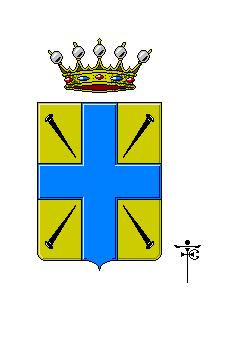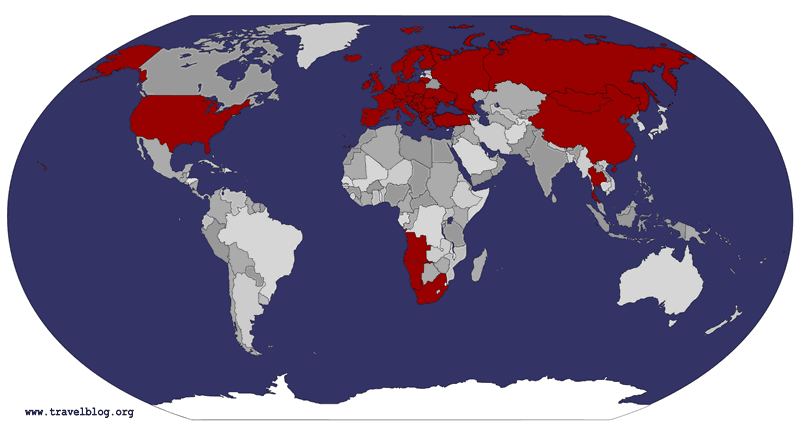Sinterklaas, A Dutch Tradition
The Arrival
The Dutch tradition of "Sinterklaas" begins at the beginning of November, even earlier if shop keepers have their way, and they mostly do [1]. The shop windows start to fill up with all the Sinterklaas attributes: gift-wrapped cardboard boxes, replicas of Sinterklaas and "Zwarte Piet" (Black Pete), chocolate letters, pepernoten. Halfway through November there is a big spectacle when the man arrives in the Netherlands. A television crew awaits his arrival at one of the more photogenic ports where he docks his steam boat full of presents, Zwarte Pieten, and his horse. They are welcomed by a huge audience of parents and children.
Sinterklaas simultaneously arrives at every city or village in the Netherlands. This is explained by way of the so-called "hulp-Sinterklazen" (people who help Sinterklaas by dressing up like him), and certainly not by some wild macroscopic quantum mechanical effect. The children who become aware to the impossibility of simultaneous sightings are told that Sinterklaas can indeed not be in every place at the same time, so people help him. Children often discover they aren't dealing with the "real" Sinterklaas on their own, when they recognize shoes, wrist-watches, rings and glasses of local shopkeepers, or even daddies, on the old man.
Sinterklaas goes on a tour through the village accompanied by several Zwarte Pieten, who throw different types of sweets around and on the ground for children to get tetanus. You can see children squirming about like maggots, trying to get hold of as much candy as their little hands can hold. The smart children, who know how diseases come about, then resort to throwing it back as hard as possible, causing multiple concussions to the Pieten. Wisened by experience, the Pieten now only deposit candy straight into the open hands of the weakest children.
After this day, Sinterklaas begins his assessment of all the children's behaviour in the past year, and proceeds to hand out presents. It all culminates on December 5th in the evening.
The Dutch tradition of "Sinterklaas" begins at the beginning of November, even earlier if shop keepers have their way, and they mostly do [1]. The shop windows start to fill up with all the Sinterklaas attributes: gift-wrapped cardboard boxes, replicas of Sinterklaas and "Zwarte Piet" (Black Pete), chocolate letters, pepernoten. Halfway through November there is a big spectacle when the man arrives in the Netherlands. A television crew awaits his arrival at one of the more photogenic ports where he docks his steam boat full of presents, Zwarte Pieten, and his horse. They are welcomed by a huge audience of parents and children.
Sinterklaas simultaneously arrives at every city or village in the Netherlands. This is explained by way of the so-called "hulp-Sinterklazen" (people who help Sinterklaas by dressing up like him), and certainly not by some wild macroscopic quantum mechanical effect. The children who become aware to the impossibility of simultaneous sightings are told that Sinterklaas can indeed not be in every place at the same time, so people help him. Children often discover they aren't dealing with the "real" Sinterklaas on their own, when they recognize shoes, wrist-watches, rings and glasses of local shopkeepers, or even daddies, on the old man.
Sinterklaas goes on a tour through the village accompanied by several Zwarte Pieten, who throw different types of sweets around and on the ground for children to get tetanus. You can see children squirming about like maggots, trying to get hold of as much candy as their little hands can hold. The smart children, who know how diseases come about, then resort to throwing it back as hard as possible, causing multiple concussions to the Pieten. Wisened by experience, the Pieten now only deposit candy straight into the open hands of the weakest children.
After this day, Sinterklaas begins his assessment of all the children's behaviour in the past year, and proceeds to hand out presents. It all culminates on December 5th in the evening.
Sinterklaas Accessories
Sinterklaas, the legendary man, looks like an old wise bloke with long white hair and similar beard. He is dressed like a bishop and has a golden (shepherd) staff in his hand. He also carries a large leather bound book, with gold print, in which it is written which children have been good and which have not. In the "good old days" kids used to be threatened to be whipped when they had been bad, with a bunch of twigs (a "roe"), after which they would be put in a burlap bag to be shipped to Sinterklaas' residence in Madrid, Spain. As parenting grew softer over the years, this valuable tradition was lost, except in some of the Sinterklaas songs. Also, people nowadays pay big money for holidays in Spain, and for whipping too for that matter. The kids are smart enough to know that, so the effectiveness of the punishment has decreased anyway.
Filling The Shoes
So why does the old man bother to come to this soggy country when he could be having a great time in the sunshine by his pool? Why, it's because of his birthday! His birthday is actually on December 6th, but for some arcane reason it is celebrated a day before [2].
Before this memorable occasion Sinterklaas climbs onto his "schimmel" [3] and trots around on rooftops. How on Earth he gets there is never explained, and how he keeps his balance on the sloping, slippery roofs is even less understood. Assisted by his black henchmen [4] he now and then throws presents down the chimneys (mostly sweets, suggesting a conspiracy of dentists...), a practice which reduced whole cities to ashes, centuries ago. This was prevented by the introduction of the central heating, with scores of disappointed children as a side effect. Thanks to the parents this hasn't yet resulted in a downfall of civilisation, as they assume the role of Sinterklaas and put presents like chocolate letters and marzipan or sugar animals in the shoes their offspring have put in front of the heating element instead. These shoes have been prepared by putting hay and/or a carrot in them, for the horse, though how this animal should get into the room is unclear and not questioned by the children. Thankful that the horrible vegetables are gone, the kids eat themselves silly on the sweets next morning. This shoe business is the opportunity for the children to give lists of all the presents they want, to Sinterklaas.
The Origins Of The Tradition
Sinterklaas is said to have originated from St. Nicolaus, the Bishop of Mira, Turkey, who was a righteous dude and did good stuff for children. The Santa Claus concept might also have originated from this guy. How it came to be that Sinterklaas lives in Spain is a mystery. There could be a connection with the Spanish inquisition or the Spanish domination over the Netherlands, but your guess is as good as mine.
The roots of "Zwarte Piet" (Black Pete) are also somewhat unclear. Some say these guys represent medieval Italian chimney sweeps. Their skin is pitch black and they wear medieval yet shiny clothes, revealing that medieval folks must have had mighty detergents, the recipe of which has been lost since. The throwing of presents down chimneys seems to be evidence for the "Italian chimney sweep" theory.
Every year there is a discussion about "Zwarte Piet" being a racist concept, which is understandable when you notice how little Black Pete nowadays resembles a chimney sweep. Children in school sometimes think their coloured friends will in the future become a Zwarte Piet, and people dressing up as Zwarte Piet pretend they're simple and speak Dutch as if they just immigrated from a tropical country. A lot of confusion could be avoided by going back to the roots and dressing Black Pete up as a real chimney sweep.
More Presents
On December 5th Sinterklaas brings the large presents, which are left in large plastic trash-bags (the same ones that will be used to throw away all the broken toys in the coming weeks) on the front porch. Sometimes the parents hire a Sinterklaas from the "Sinterklaascentrale" (an organization providing assistant Sinterklazen) to present the presents. They might even dress up themselves, causing uncomfortable situations when the kids recognize those shoes, wrist watches, rings and glasses mentioned before. "Daddy is a transvestite" is a commonly heard and traumatising remark. The old, wise man utters some very wise words such as "Are there any naughty children here?" and "Have you been a good boy/girl this year?". Upon receiving the respective replies of "noooo!" and "yeees!", Sinterklaas proceeds to explain why that reply is incorrect. Loads of children are traumatised by Sinterklaas every year, especially when they are forced to sit on his lap and sing a Sinterklaas song.
Sinterklaas for grown-ups means a party of giving and receiving gifts, much like on Christmas, but now the presents are called "surprises" (pronounce as "sir-preeze-us"). A surprise is a gift hidden within a product of tinkering, aimed at giving the gift the appearance of something completely different, accompanied by a poem. It serves to embarrass the addressee by reminding him/her of some embarrassing moments in the past year, or to point out a general failure of character in a mocking way. It is the day to get even with anybody for anything, but it is mostly played with family and/or friends. The most cliched surprises are a gift:
1. in a bucket of shit [5];
2. wrapped in five thousand kilometres of sticky tape; or
3. which is only an empty box.
A fun tradition, no?
[1]
I've seen Sinterklaas stuff in shops as early as mid October.
[2]
Maybe the fact that Sinterklaas is supposed to be several centuries old has led people to believe it is highly probable for him to die any minute, so to be sure that they receive the presents anyway, they celebrate his birthday a day in advance. Seeing what tricks he gets up to during his stay, this really isn't such a strange thought!
[3]
Schimmel, n. 1. Grey horse. 2. Mould.
[4]
Women too; children often notice the suspicious bumps on the chest, and are not fooled by the low voices they use.
[5]
Unfortunately not many people dare to use real dung, but mock it by mixing some kind of cake ("ontbijtkoek") with water.
(by Galactic Guide)


No comments:
Post a Comment